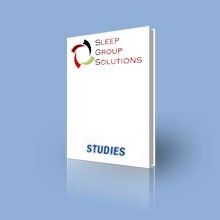
Utility of Acoustic Pharyngometry for Screening of Obstructive Sleep Apnea
Source: https://www.elsevier.com/locate/anl
Abstract:
Objective: To determine whether combining acoustic pharyngometric parameters with cephalo- metric and clinical parameters could improve the predictive power for significant obstructive sleep apnea (OSA) in a Korean population.
Methods: A total of 229 consecutive adult patients with suspected OSA were enrolled. The predictability for significant OSA using acoustic pharyngometric or cephalometric parameters or combining these parameters and clinical factors was calculated and compared using multivariate logistic regression and receiver operating characteristic (ROC) curves.
Results: In multivariate logistic regression, age, sex, minimum upper airway cross-sectional area (UA-CSA), and mandibular plane to hyoid distance (MPH) were all significant independent predictors of significant OSA. The minimum UA-CSA of 0.85 cm2 provided fair discrimination for OSA [area under the curve (AUC): 0.60, 95% confidence interval (CI): 0.52–0.67]. The MPH of 18.75 mm provided fair discrimination for OSA (AUC; 0.65, 95% CI: 0.58–0.72). The discriminative ability of the final model of multivariate ROC curve analyses that included the minimum UA-CSA, age, sex, body mass index (BMI), and MPH was better than the minimum UA-CSA alone (AUCs: 0.77 vs. 0.60). Optimal cut-off values of predictors for discriminating significant OSA were as follows: male for sex, 40 years for age, 25.5 kg/m2 for BMI, 1.06 cm2 for minimum UA-CSA, and 18 mm for MPH.
Conclusion: Minimum UA-CSA measured using acoustic pharyngometry while sitting might be a useful method to predict OSA. Combining minimum UA-CSA with age, sex, BMI and MPH improved the predictive value for significant OSA.

